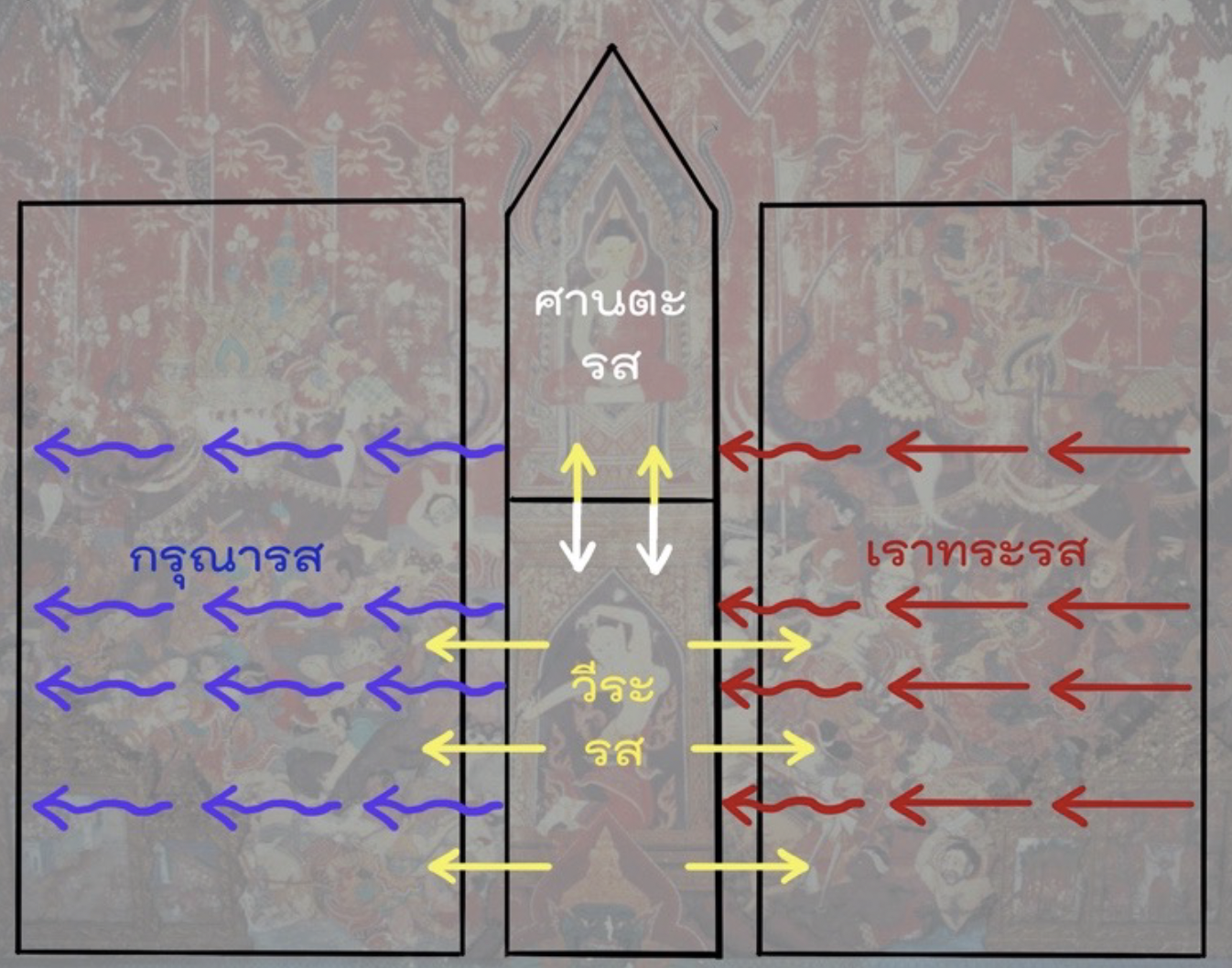An analysis of traditional Thai paintings depicting demon Mara’s Assault applying Rasa theory of aesthetics
DOI:
https://doi.org/10.69598/decorativeartsjournal.2.33-65Keywords:
Aesthetics, Rasa, Buddha’s life story, Assault of Mara, Thai traditional paintingAbstract
This article proposes an analysis of traditional Thai paintings depicting demon Mara’s Assault—Mara attempting to tempt Buddha, applying “Rasa”, an Indian concept of sentiment, one of significant theories in Indian aesthetics. It outlines the origin and the concept of Rasa, then examines Buddhist literatures describing the Temptation of Buddha by Mara scene, from which such paintings are originated and portrayed. Then, it provides an explanation on the paintings in details where they correspond to the various Rasas and eventually analyses each part of the paintings: how they interrelate, how a Rasa gives rise to one another, and how it shifts or transform. The article aims to deepen understanding on the representation of the scene and to provide some guidelines on applying the Rasa aesthetics theory into creation or further analysing other Thai traditional paintings.
References
ธัชชัย กรกุม. (2554). รูปอ้างถึงพระพุทธเจ้าในวรรณกรรมพุทธประวัติ [วิทยานิพนธ์มหาบัณฑิต มหาวิทยาลัยศิลปากร]. Silpakorn University Repository: SURE. http://www.sure.su.ac.th/xmlui/handle/123456789/4454
น. ณ ปากน้ำ. (2537). วัดคงคาราม. เมืองโบราณ.
บัณฑิต ลิ่วชัยชาญ. (2563). มรดกภูมิปัญญา จิตรกรรมฝาผนังสมัยรัตนโกสินทร์ : วัดราชสิทธาราม วัดสุวรรณาราม และวัดทองธรรมชาติ. กรมส่งเสริมวัฒนธรรม.
ปรมานุชิตชิโนรส, สมเด็จพระมหาสมณเจ้า กรมพระ. (2438). พระปฐมสมโพธิกถา. โรงพิมพ์ วัชรินทร์ บริสัท.
ภรตมุนี. (ม.ป.ป.). นาฏยศาสตร [นาฏยศาสตร์] (พิมพ์ครั้งที่ 2). กรมศิลปากร.
อภิวันทน์ อดุลยพิเชฏฐ์. (2556). จิตรกรรมฝาผนังวัดดุสิดาราม (พิมพ์ครั้งที่ 2). เมืองโบราณ.
Goswamy, B. N. (1986). Essence of Indian art. Asian Art Museum of San Francisco.
Leiden University Libraries. (n.d.). Mara attacks the Buddha, Amaravati. http://hdl.handle.net/1887.1/item:87357
Lippe, Aschwin. (1970). The Freer Indian sculptures. Smithsonian Institution.
Masson, J. L., & Patwardhan, M. V. (1969). Santarasa and Abhinavagupta’s philosophy of aesthetics. Bhandarkar Oriental Research Institute.
Musée Guimet. (n.d.). Une œuvre – Les assauts de Mara. https://www.guimet.fr/blog/les-assauts-de-mara-scenes-de-la-meditation-deveil-du-bouddha-shakyamuni/
Takata, Osamu. (1971). Ajanta. Heibonsha Ltd., Publishers.
Victoria and Albert Museum. (2005). Copy of painting inside the caves of Ajanta. https://collections.vam.ac.uk/item/O118419/copy-of-painting-inside-the-oil-painting-griffiths-john/

Downloads
Published
How to Cite
License
Copyright (c) 2023 DEC Journal

This work is licensed under a Creative Commons Attribution-NonCommercial-NoDerivatives 4.0 International License.
Published by Academic Affairs Division, Faculty of Decorative Arts, Silpakorn University. The copyright of the article belongs to the article owner. Published articles represent the views of the authors. The editorial board does not necessarily agree with and is not responsible for the content of such articles.


